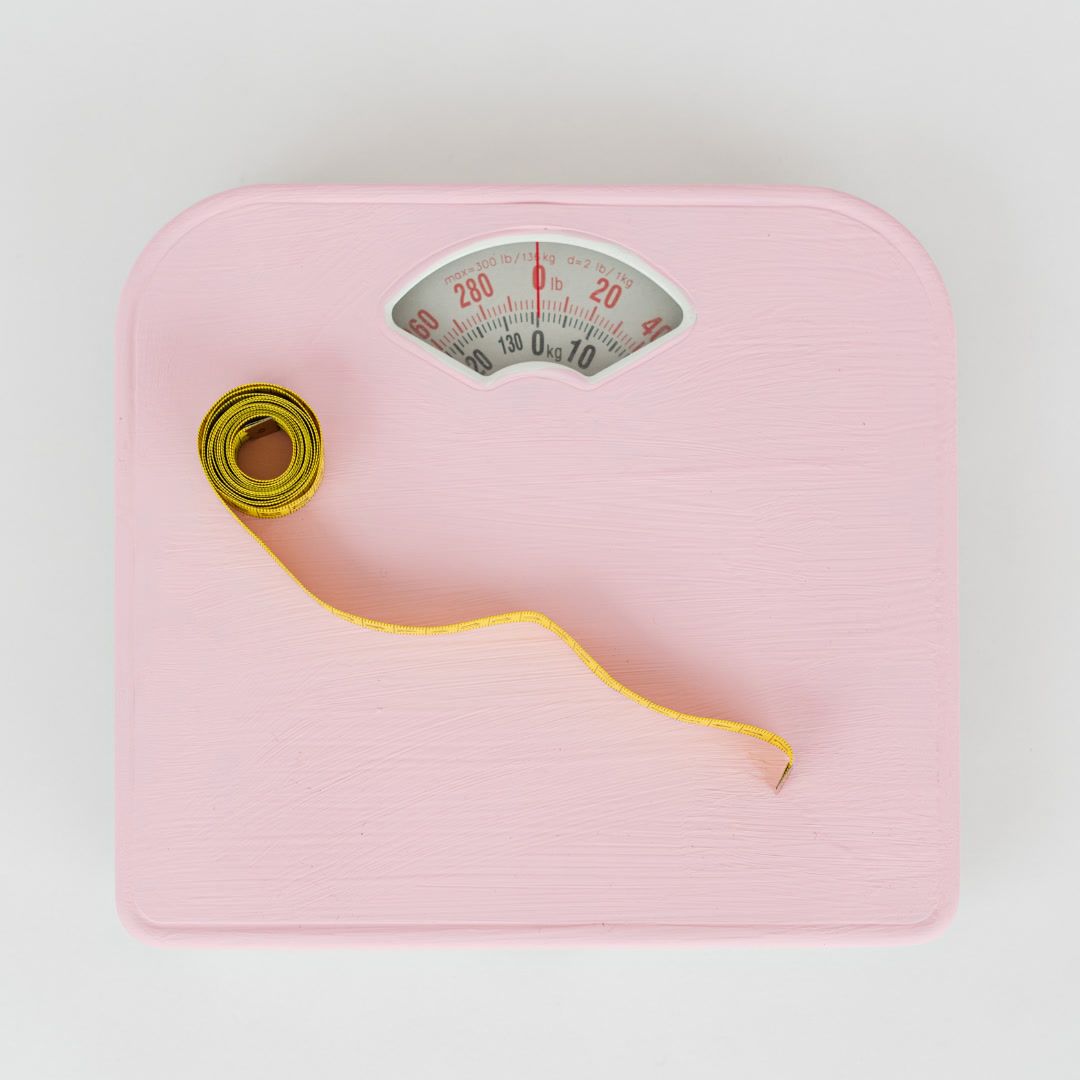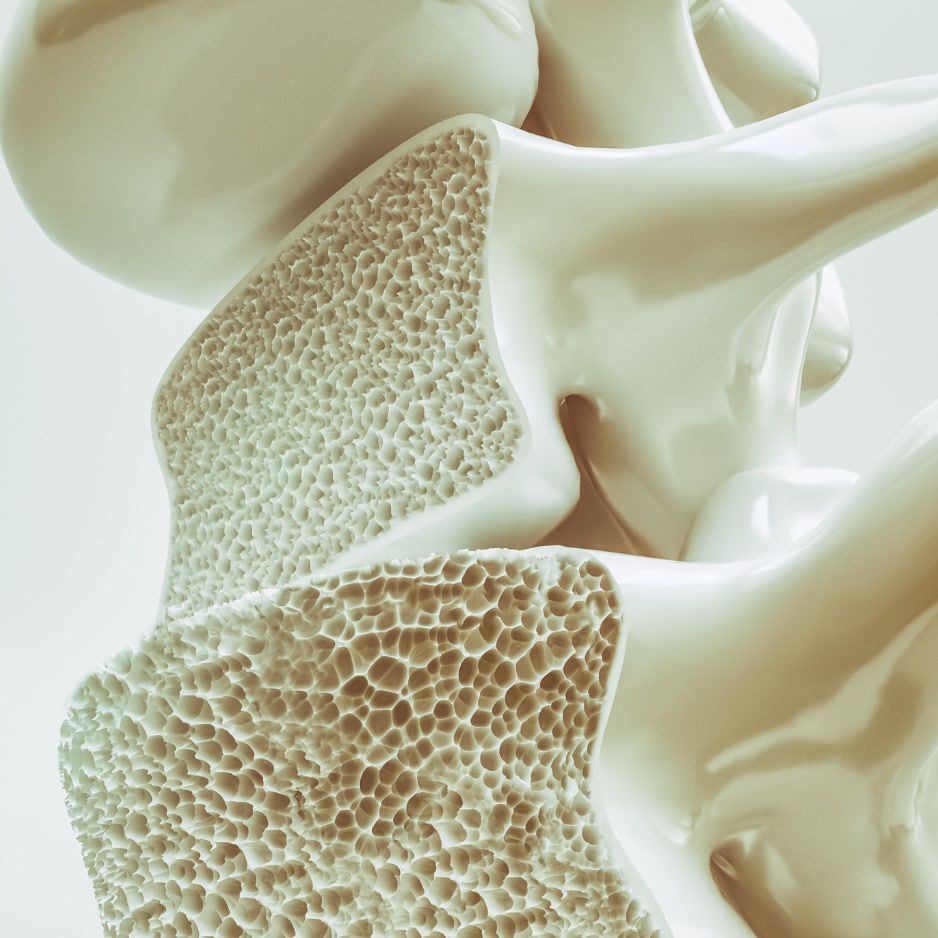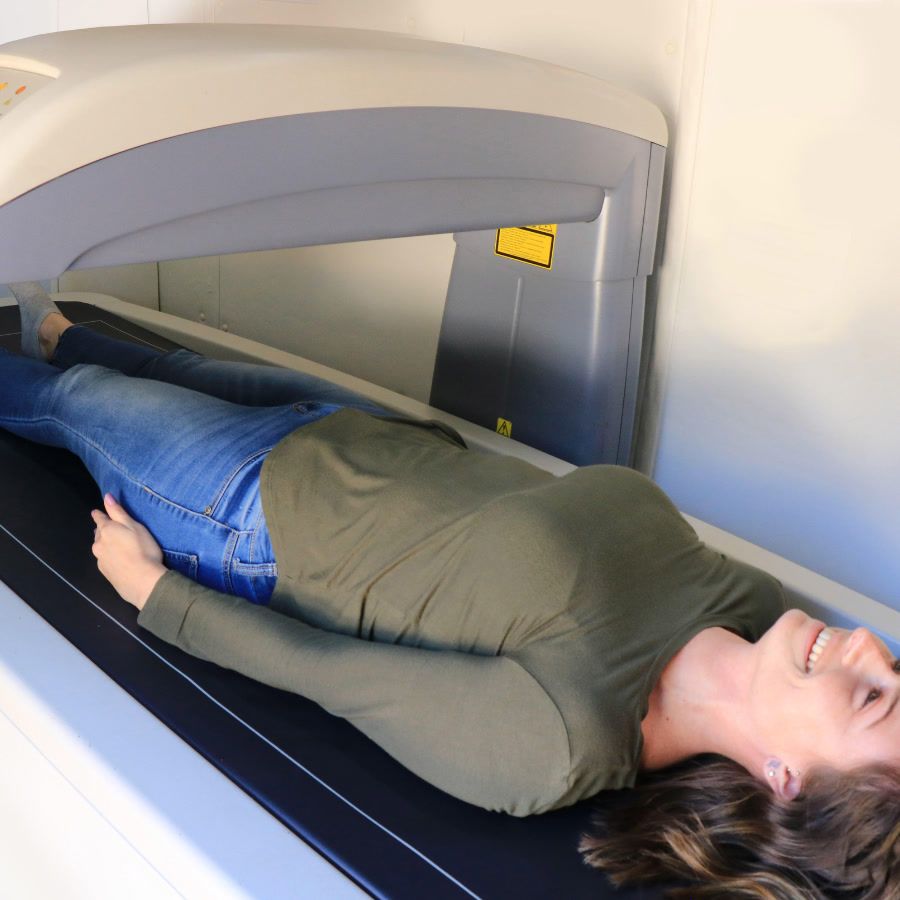Upper/Lower Split: 4-Day Muscle & Strength Plan

Upper/Lower Split: 4-Day Plan for Muscle & Strength
You don’t need to live in the gym to see real results. The classic four-day upper/lower split trains every major muscle group twice a week, balances recovery, and leaves you three rest days for life outside the weight room. Whether you’re brand-new to barbells or prepping for a physique show, this guide shows you how to program the split, progress it, and decide if it beats popular options like push/pull/legs.
What Is an Upper/Lower Split?
An upper/lower split divides training days by body region:
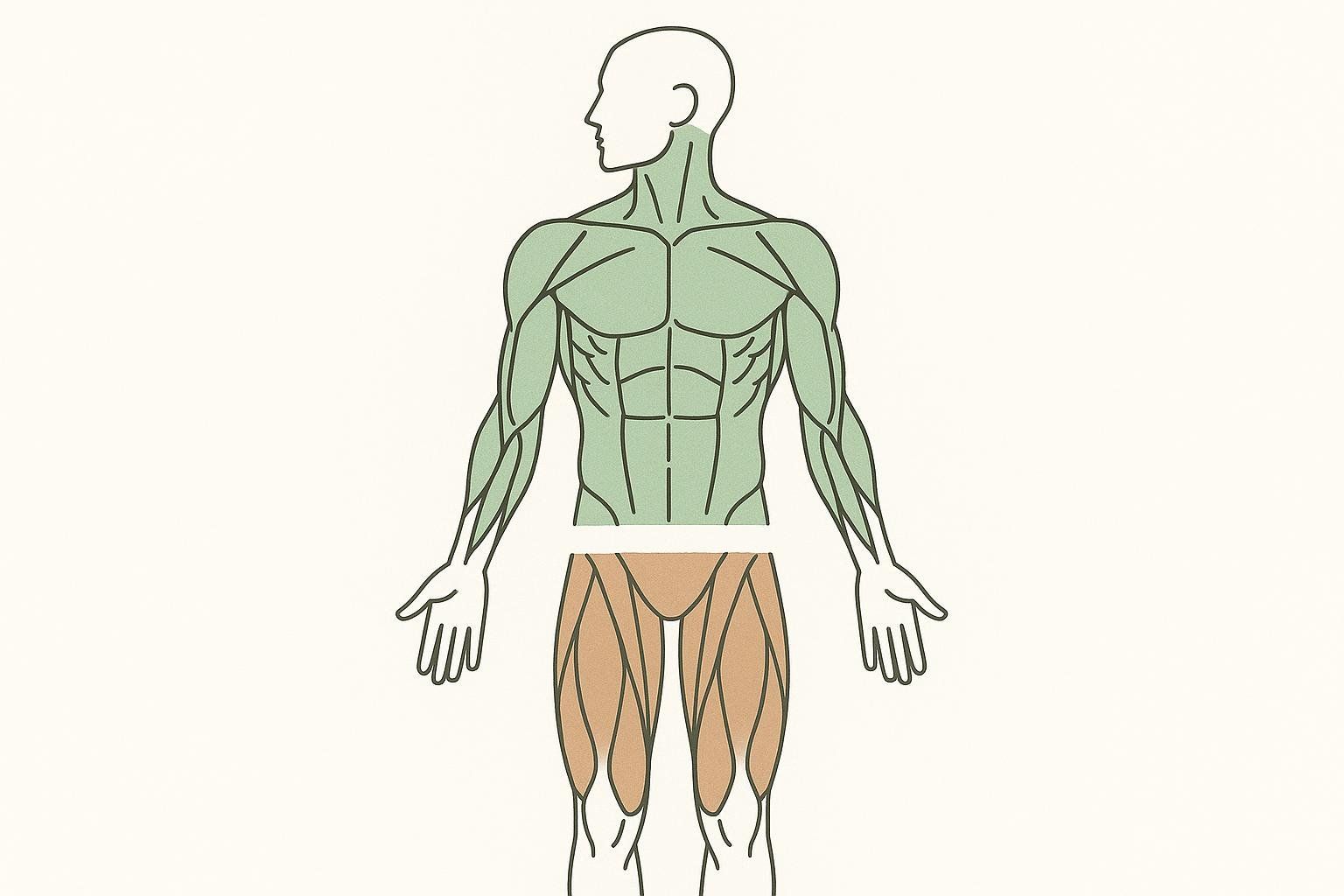
| Day | Focus | Major Muscles |
|---|---|---|
| Upper A | Chest, back, shoulders, arms | Pecs, lats, delts, biceps, triceps |
| Lower A | Quads, hamstrings, glutes, calves | Quads, hams, glutes, calves |
| Upper B | Different angles & accessories | Chest, back, shoulders, arms |
| Lower B | Posterior-chain emphasis | Glutes, hams, quads, calves |
Repeated twice weekly, each muscle group receives two quality growth stimuli—the frequency most research links to superior hypertrophy compared with once-weekly single-muscle-group splits.
Typical 4-Day Template
Mon – Upper A
Tue – Lower A
Wed – Rest or active recovery
Thu – Upper B
Fri – Lower B
Sat – Rest
Sun – Rest or light cardio
6 Science-Backed Benefits of the Upper/Lower Split
- Optimal Training Frequency – Hitting muscles twice weekly outperforms once-weekly training at similar volume for strength and size gains.
- Balanced Volume Distribution – Each session targets half the body, preventing marathon workouts while keeping weekly sets high.
- Recovery Friendly – Upper muscles rest while lower muscles work (and vice versa), reducing systemic fatigue.
- Schedule Flexibility – Four main workouts leave three open days for mobility, conditioning, or extra sleep.
- Beginner Through Advanced Friendly – Randomized trials in untrained men and women showed similar gains with twice-weekly training when weekly volume was matched (study on untrained men, study on untrained women).
- Easy Progress Tracking – Repeating movement patterns every 3–4 days lets you notice strength jumps quickly—then confirm body-comp changes with a quarterly DEXA scan.

Need a deep dive on growth science? Read our comprehensive hypertrophy guide.
Quick Decision Guide
How many days can you realistically train?
- 2–3 days/week – A full-body program may suit you better.
- 4 days/week – The upper/lower split hits every muscle twice weekly without marathon sessions.
- 5–6 days/week – Consider push/pull/legs or running the upper/lower split six times per week if recovery allows.
If 4 days feels right, match one track to your goal:
- General fitness 👉 Beginner Track
- Busting plateaus 👉 Intermediate Track
- Maximizing hypertrophy 👉 Advanced Track
Sample 4-Day Upper/Lower Programs
1. Beginner Track (8-Week Foundation)
Focus on compound lifts, three work sets per exercise. Rest ~90 s.
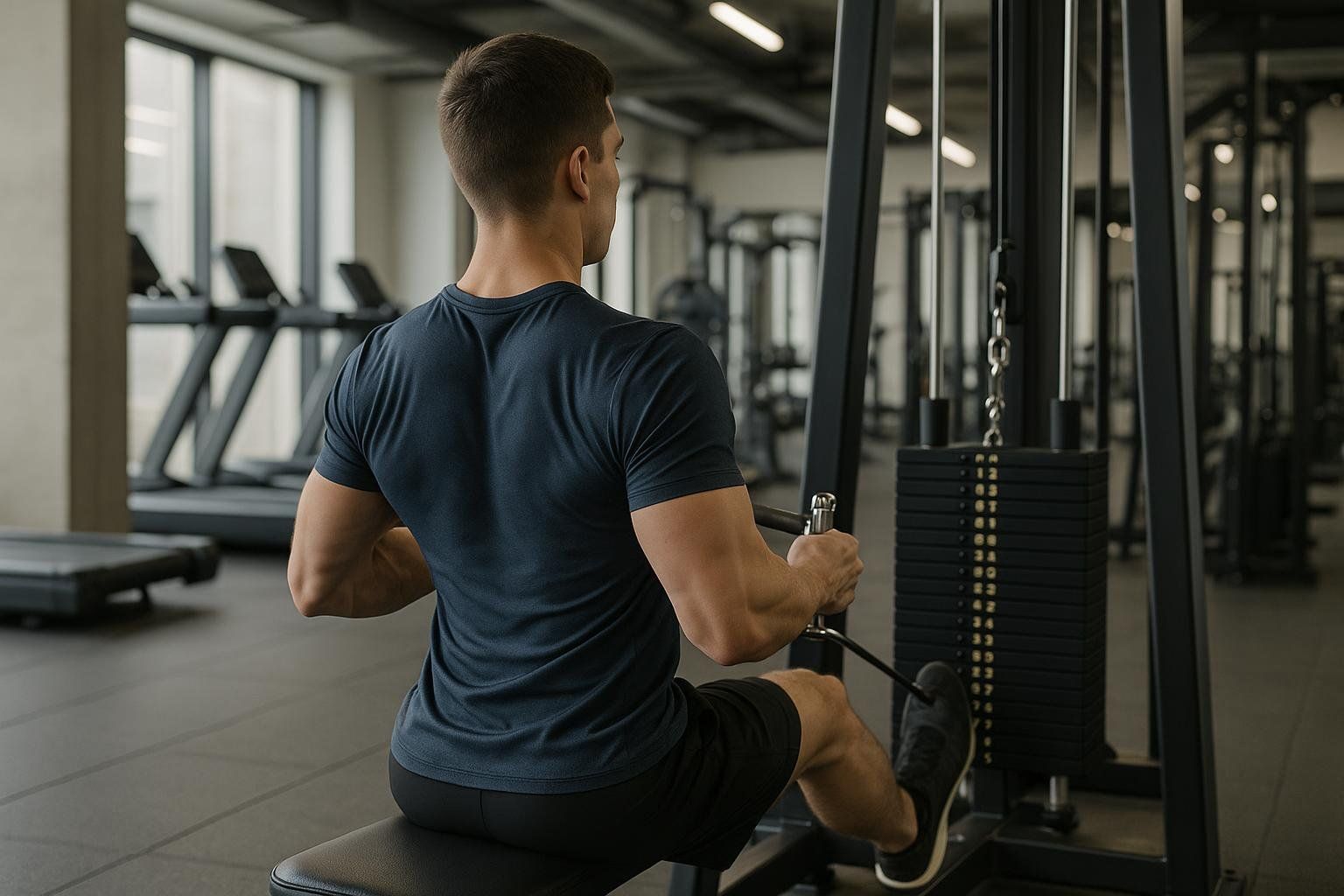
Upper A
| Exercise | Sets × Reps |
|---|---|
| Bench Press | 3 × 8 |
| Lat Pulldown | 3 × 10 |
| Dumbbell Shoulder Press | 3 × 10 |
| Seated Cable Row | 3 × 10 |
| Plank | 3 × 30 s |
Lower A
| Exercise | Sets × Reps |
|---|---|
| Back Squat | 3 × 8 |
| Romanian Deadlift | 3 × 10 |
| Walking Lunge | 3 × 12/leg |
| Standing Calf Raise | 3 × 15 |
| Side Plank | 3 × 30 s |
Upper B
| Exercise | Sets × Reps |
|---|---|
| Incline Dumbbell Press | 3 × 10 |
| Seated Row | 3 × 10 |
| Lateral Raise | 3 × 12 |
| Face Pull | 3 × 12 |
| Bicep Curl | 3 × 12 |
| Tricep Rope Push-down | 3 × 12 |
Lower B
| Exercise | Sets × Reps |
|---|---|
| Deadlift | 3 × 5 |
| Leg Press | 3 × 12 |
| Glute Bridge | 3 × 15 |
| Hamstring Curl | 3 × 12 |
| Hanging Knee Raise | 3 × 10 |
Progression – Add 2.5–5 lb to upper-body lifts and 5–10 lb to lower-body lifts once you hit the top rep range with good form two weeks in a row.
Related: Strength Training for Beginners.
2. Intermediate Track (12-Week Plateau Buster)
First two sessions build power and strength; the latter two sessions focus on hypertrophy.
Upper Power
| Exercise | Sets × Reps |
|---|---|
| Bench Press | 5 × 5 |
| Pendlay Row | 5 × 5 |
| Incline Dumbbell Press | 3 × 8 |
| Weighted Pull-up | 3 × 8 |
Lower Power
| Exercise | Sets × Reps |
|---|---|
| Back Squat | 5 × 5 |
| Romanian Deadlift | 4 × 6 |
| Bulgarian Split Squat | 3 × 10 |
| Standing Calf Raise | 3 × 10 |
Upper Hypertrophy
| Exercise | Sets × Reps |
|---|---|
| Dumbbell Bench Press | 4 × 10 |
| Seated Cable Row | 4 × 12 |
| Lateral Raise | 3 × 12 |
| Skull Crusher | 3 × 12 |
| Hammer Curl | 3 × 12 |
| Face Pull | 3 × 12 |
Lower Hypertrophy
| Exercise | Sets × Reps |
|---|---|
| Front Squat | 4 × 10 |
| Hip Thrust | 4 × 12 |
| Leg Curl | 3 × 15 |
| Goblet Squat | 3 × 15 |
Weekly Volume – 16–20 sets per major muscle group—right in the sweet spot research shows to maximize growth while avoiding overtraining (Stronger By Science frequency analysis).
Tip: Track tonnage (sets × reps × load) each week and aim to increase it over time.
3. Advanced Track (Competition Prep)
Primary lifts marked with an asterisk (*) run through a 3-week wave:
- Week 1: 5 × 8 @ ~70 % 1RM (RPE 7)
- Week 2: 5 × 5 @ ~80 % 1RM (RPE 8)
- Week 3: 3 × 3 @ ~85 % 1RM (RPE 8–9)
Deadlifts use 5 × 6, 5 × 4, and 3 × 2 across the same weeks.
Upper A (Bench Press Focus)
| Exercise | Sets × Reps |
|---|---|
| Bench Press* | 5 × 8 / 5 × 5 / 3 × 3 |
| Chest-Supported Row | 3 × 10 |
| Overhead Press | 3 × 8 |
| Dip | 3 × 8 |
| Hammer Curl | 3 × 12 |
Upper B (Overhead Press Focus)
| Exercise | Sets × Reps |
|---|---|
| Overhead Press* | 5 × 8 / 5 × 5 / 3 × 3 |
| Close-Grip Bench | 3 × 8 |
| Rear-Delt Fly | 3 × 12 |
| Incline Dumbbell Press | 3 × 10 |
| Weighted Chin-up | 3 × 6 |
Lower A (Back Squat Focus)
| Exercise | Sets × Reps |
|---|---|
| Back Squat* | 5 × 8 / 5 × 5 / 3 × 3 |
| Romanian Deadlift | 3 × 8 |
| Walking Lunge | 3 × 10/leg |
| Standing Calf Raise | 3 × 15 |
| Ab-Wheel Rollout | 3 × 12 |
Lower B (Deadlift Focus)
| Exercise | Sets × Reps |
|---|---|
| Deadlift* | 5 × 6 / 5 × 4 / 3 × 2 |
| Hip Thrust | 3 × 10 |
| Reverse Hyper | 3 × 12 |
| Nordic Curl | 3 × 6 |
| Single-Leg Calf Raise | 3 × 15 |
Progression, Recovery & Deloading
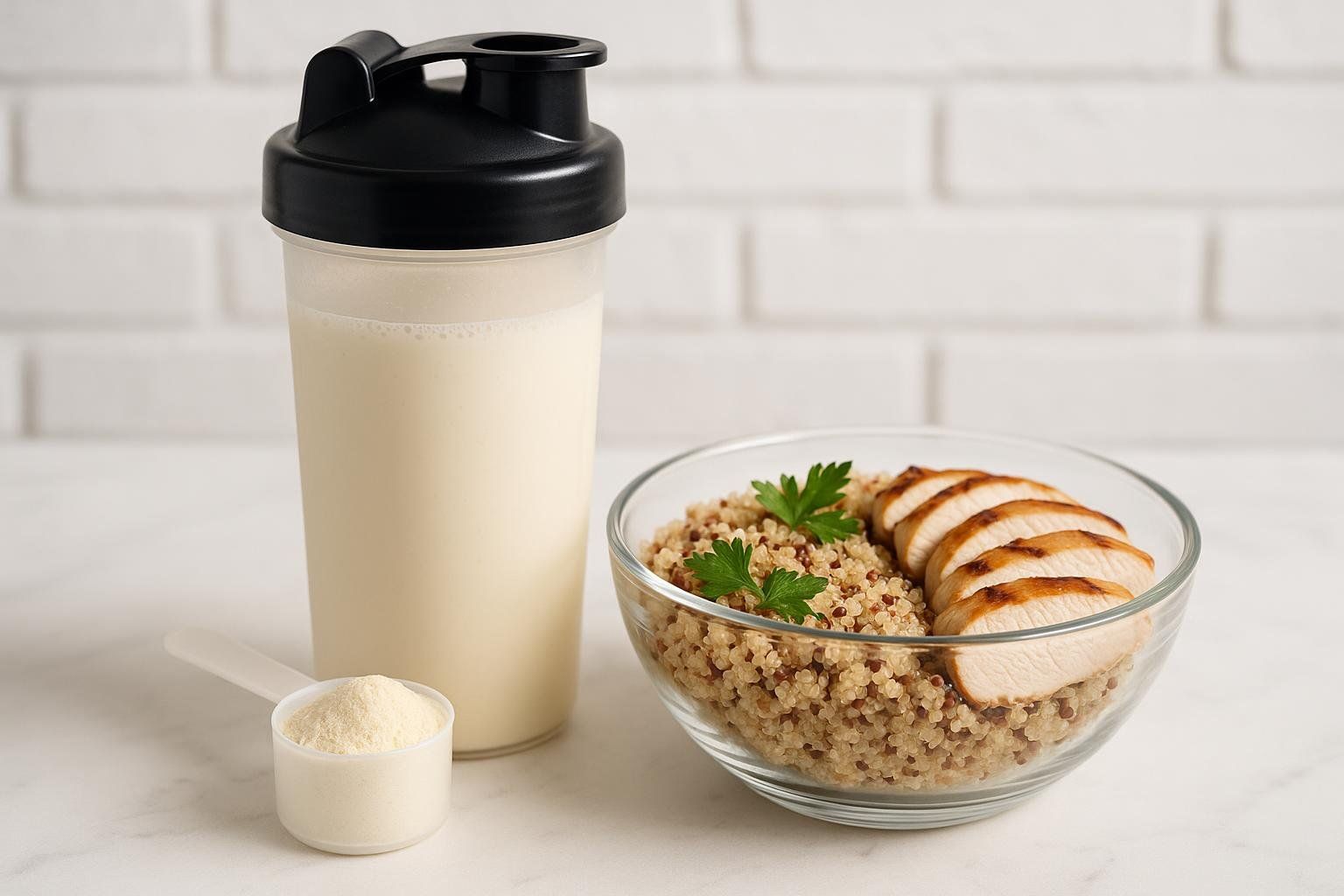
| Variable | Beginner | Intermediate | Advanced |
|---|---|---|---|
| Load Increase | Linear 2.5–5 lb | Double-progression | RPE / %-based |
| Weekly Sets | 12–14 | 16–20 | 18–24 |
| Rest Days | 3 | 2–3 | 1–2 (+ active recovery) |
| Deload | Every 8 weeks | Every 6 weeks | Every 4–6 weeks |
Aim for 7–9 hours of sleep, 1.6–2.2 g protein per kg body weight, and twice-daily mobility on rest days. Not sure if you’re recovering? Use a DEXA scan to watch lean-mass trends and visceral-fat changes. See our guide to interpreting DEXA results.
Upper/Lower vs Push/Pull/Legs vs Full-Body
| Factor | Upper/Lower | Push/Pull/Legs | Full-Body |
|---|---|---|---|
| Weekly Frequency | 2×/muscle | 2×/muscle (6 days) | 2–3×/muscle (3 days) |
| Session Length | 60–75 min | 45–60 min | 75–90 min |
| Rest Days | 3 | 1 | 4 |
| Ideal For | Most lifters with 4 days | Enthusiasts with 6 days | Busy beginners |
| Cons | Less focus per muscle vs. body-part split | More total weekly time | Longer single workouts |
Research shows similar hypertrophy when volume is equated, so pick the approach that best fits your lifestyle.
Frequently Asked Questions
How long should I stay on an upper/lower split?
At least 8–12 weeks. Muscles need time under consistent stimulus to adapt.
Can I add cardio?

Yes—place low-intensity cardio on rest days or after lower-body sessions to minimize interference.
What if I miss a workout?
Push the schedule back a day. Avoid performing two upper-body sessions back-to-back, as this can compromise joint and connective-tissue recovery.
Is four days enough for advanced athletes?
Yes. A well-designed four-day program can provide sufficient volume. The advanced template includes 18–24 weekly sets per major muscle group, aligning with research on optimal training volume for hypertrophy.
Do I need different accessory exercises every week?
Stick with the same moves for at least one mesocycle (3–6 weeks) so progression is measurable.
Track Your Transformation with BodySpec
Programming is half the equation; measuring results closes the loop. A quick 10-minute BodySpec DEXA scan quantifies fat mass, lean mass, bone density, and even visceral fat. Re-scan every 8–12 weeks to see if your upper/lower plan is actually adding muscle where you want it.
Ready to see the numbers? Learn more about the DEXA scan procedure at one of our upcoming locations.
Key Takeaways
- Training each muscle twice weekly hits the sweet spot for size & strength.
- Four focused sessions balance volume with recovery and life demands.
- Customize load, volume, and accessories to your experience level.
- Verify progress with DEXA to keep motivation sky-high.
Stick to the plan, fuel your body, and let the upper/lower split show you how efficient muscle building can be.
